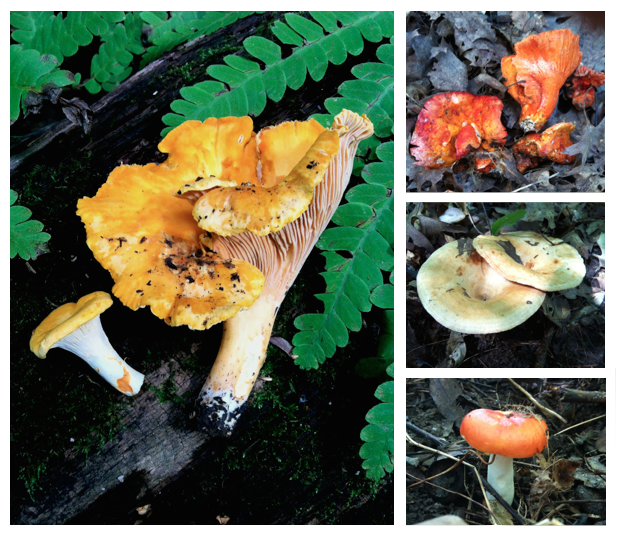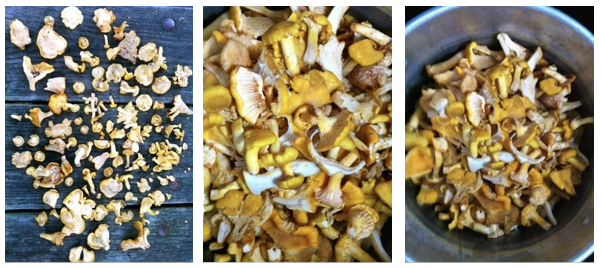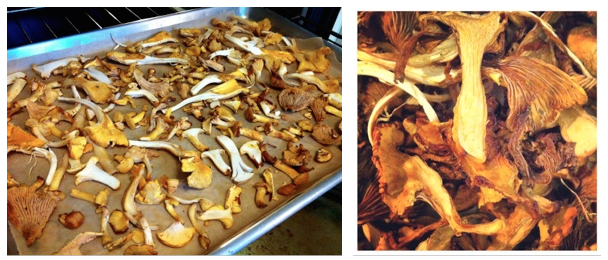
My big summer vacation this year was a camping trip to Whitewater State Park in Southeast Minnesota. My partner and I planned to go hiking, fishing and generally lounge around the campfire. Our first day we set off for a hike with walking sticks and my new National Audubon Society Field Guide to North American Mushrooms, just in case. We started up the trail. Not more than 20 feet later – what are those mushrooms over there? Moments later we found the queen of summer mushrooms, the beautiful and perfumed Chanterelle.
Whitewater is known for it’s morels, which I mentioned in my Hunting Morels post this past April. Turns out it’s home to bountiful mushrooms from spring thru fall. We saw over fifteen varieties during our trip, but only tentatively identified most from our field guide. They were probably edible, but only two were positively identified: Chanterelles and Lobsters. We had just reviewed these two fungi at our last Minnesota Mycological Society meeting, so they were easy to spot. (I’ll talk about the lobsters in a later post here.)
The most identifiable thing about chanterelles? They smell like apricots. Really. It’s a stunning fragrance, both fruity and earthy at the same time. And they have a similar pale apricot hue. We found them under oak trees, where they grow from the root system, both close to the trunk and quite far afield. For us they always appeared along side these big creamy lactarius and red topped russula mushrooms (we think), growing out of carpets of green moss or under ferns and leaves. It had recently rained, which must have kicked things off. Once harvested, they quickly begin to exude their fragrance. As I walked around with my mesh back of chanterelles, all I could smell were apricots. Pocket perfume! So sexy.
That day we picked about two pounds of chanterelles. Because we had not planned on foraging, all I had at the campsite was butter, garlic and onion and a cast iron skillet. Pretty simple stuff, but they tasted fantastic. Chanterelles take hardly any cooking time and are very delicate. They have a tender, silky texture. Before heading home we picked another pound of chanterelles to dry. Below is my quick sauté recipe as well as instructions for drying these beauties. I think I’ll use the dried ones for mushroom gravy at Thanksgiving. If I can wait that long…

